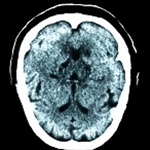Two Studies from the University of Chicago Examine STING Pathways and Cancer
December 1, 2014
Two different teams of researchers, both from the University of Chicago, have found that a recently discovered protein complex is critical to the body’s immune response to tumors. These complementary findings could help improve current immunotherpaies to allow the human body to better respond to tumors and cancerous cells.
Both published in the Nov. 20 issue of the journal Immunity, researchers have focused on the Stimulator of Interferon Genes protein complex, often called STING for short. STING pathways are parts of the immune system that help detect issues within cells, but outside the nucleus, the University of Chicago explained.
When a DNA issue is detected, like a tumor forming, the STING pathway triggers the release of interferon-beta, which will eventually lead to T cells attacking the tumor. However, human immune systems don’t regularly destroy tumors or cancerous cells on their own because of “checkpoints,” the researchers explained, which block normal responses. But, hopefully, the STING research may help change that.
“We have learned a great deal recently about what we call checkpoints, the stumbling blocks that prevent the immune system from ultimately destroying cancers,” explained Thomas Gajewski, M.D., Ph.D., study author and the University of Chicago’s professor of medicine and pathology. “Blockade of immune checkpoints, such as with anti-PD-1, is therapeutic in a subset of patients, but many individuals still don’t respond. Understanding the role of the STING pathway provides insights into how we can ‘wake up’ the immune response against tumors. This can be further boosted by checkpoint therapies.”
The two teams’ research
One of the research teams looked at how radiation therapy affected cancer destruction in relation to STING pathways. The scientists tested mice with and without STING deficiencies. They found that in mice with STING pathways, the radiation killed the cancer cells and the damage triggered an immune response. Those that were deficient had no beneficial immune actions.
The other of the university’s research two teams tested checkpoint inhibiting drugs on mice. They found that these drugs, like anti PD-1 or anti PD-L1, were ineffective in mice when their STING complex was lacking.
The next step for the research would be to develop a treatment that focuses on stimulating and activating the STING pathway.
The STING molecule was first mentioned in a paper published by Glen Barber, Ph.D. and Hiroki Ishikawa, Ph.D, in 2009 in the journal Nature. Their study identified STING and its importance to the immune system’s response to cancer.



